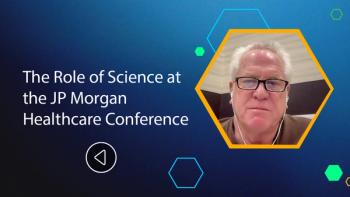
- Pharmaceutical Executive-12-21-2005
- Volume 0
- Issue 0
Los Angeles Facility Discontinues Use of OraQuick Rapid HIV Test
A recent spate of false positive results using OraSure’s test has officials and company representatives scrambling to figure out what is causing these anomalies and how to stop them from impacting testing rates.
An unexplained rise in the false-positive rate of OraSure Technologies' breakthrough rapid oral test for HIV has led several major clinics to discontinue using the test. Most recently, the LA Gay and Lesbian Center stopped using the OraQuick Advance oral test Dec. 16, after an unusual number of people received inaccurate results.
According to center spokesman Jim Key, the organization has noted 13 false positive tests since they began tracking these occurrences in November. They don't know exactly how many oral tests they administered during this period, but Key estimated around 600.
Clinics that provide HIV testing typically expect false positives in the range of four per thousand tests administered. All patients with a positive oral test are given follow-up blood tests. This fall, however, clinics in New York, San Francisco and Los Angeles have noted higher-than-expected rates of false positives.
Between September and November, the San Francisco County Health Department recorded six to eight false positives out of every 1000 tests.
The LA Gay and Lesbian Center has not changed the way it administers the OraQuick tests, Key said. It began using the oral rapid test before its June 2004 FDA approval, during the product's clinical trials. Prior to this fall, they have always been confident in the OraQuick Advance oral test. The center continues to use the OraQuick fingerstick test, which uses blood rather than oral fluid, Key noted.
OraSure Technologies met with the Gay and Lesbian Center earlier this week and with San Francisco County in October. Dowling said the company provided her department with cameras to take pictures of problematic test results. OraSure is also contacting other customers to address questions or problems with the product, according to spokeswoman Jennifer Moritz.
"The company is moving forward in a scientific and systematic manner, in collaboration with affected customers, healthcare officials, and government agencies, in order to determine the reasons for these unexpected results as rapidly as possible," she said via e-mail.
Similar to a pregnancy test, the OraQuick Advance test shows one line if the individual is negative and two lines if he is positive. The problematic test results tend to show one strong line and a second, very faint, line, Dowling said. Since there is more than one line, it is counted as positive but results for tests with this faint second line are often reversed in the follow-up stage, she added.
Dowling speculated that the faint line could show up when someone is seroconverting, an early stage of infection when HIV antibodies are first present. The oral test is more sensitive to HIV antibodies than the blood test, so the antibodies might not be detected in the follow-up. As a result, a second blood test should be administered two weeks after getting results from the first one, she said.
But no one is certain about the cause of this recent increase in false positives. Neither the Gay and Lesbian Center nor OraSure are speculating publicly about what may cause this increase in false positive test results.
"The jury is still out," Dowling said. "We still have to figure it out."
The county is working with state officials on a protocol for tests with a faint second line. This would involve following up with the OraQuick fingerstick test. A blood test would still be required even if the second test was negative, but it could help offer people with these types of confusing results peace of mind while they wait two weeks for the results of the blood test.
Both Key and Dowling emphasized the importance of reliable results that people can get right away. Rapid results have increased the number of people getting tested, according to Key, and he is very concerned that if they are perceived as unreliablethe testing rates might decrease.
"We want to make it as easy as possible for people to get an HIV test," Dowling said.
Dowling noted that San Francisco County has not seem a decrease in the number of people being tested since the increase in false positives was made public, but these reports have not been out for very long. Key added that his organization wants to make it clear that they still have confidence in the OraSure fingerstick test and that rapid testing is still available at the clinic.
Articles in this issue
about 20 years ago
Study Will Compare Heart Risk of COX-2 and NSAIDsNewsletter
Lead with insight with the Pharmaceutical Executive newsletter, featuring strategic analysis, leadership trends, and market intelligence for biopharma decision-makers.




